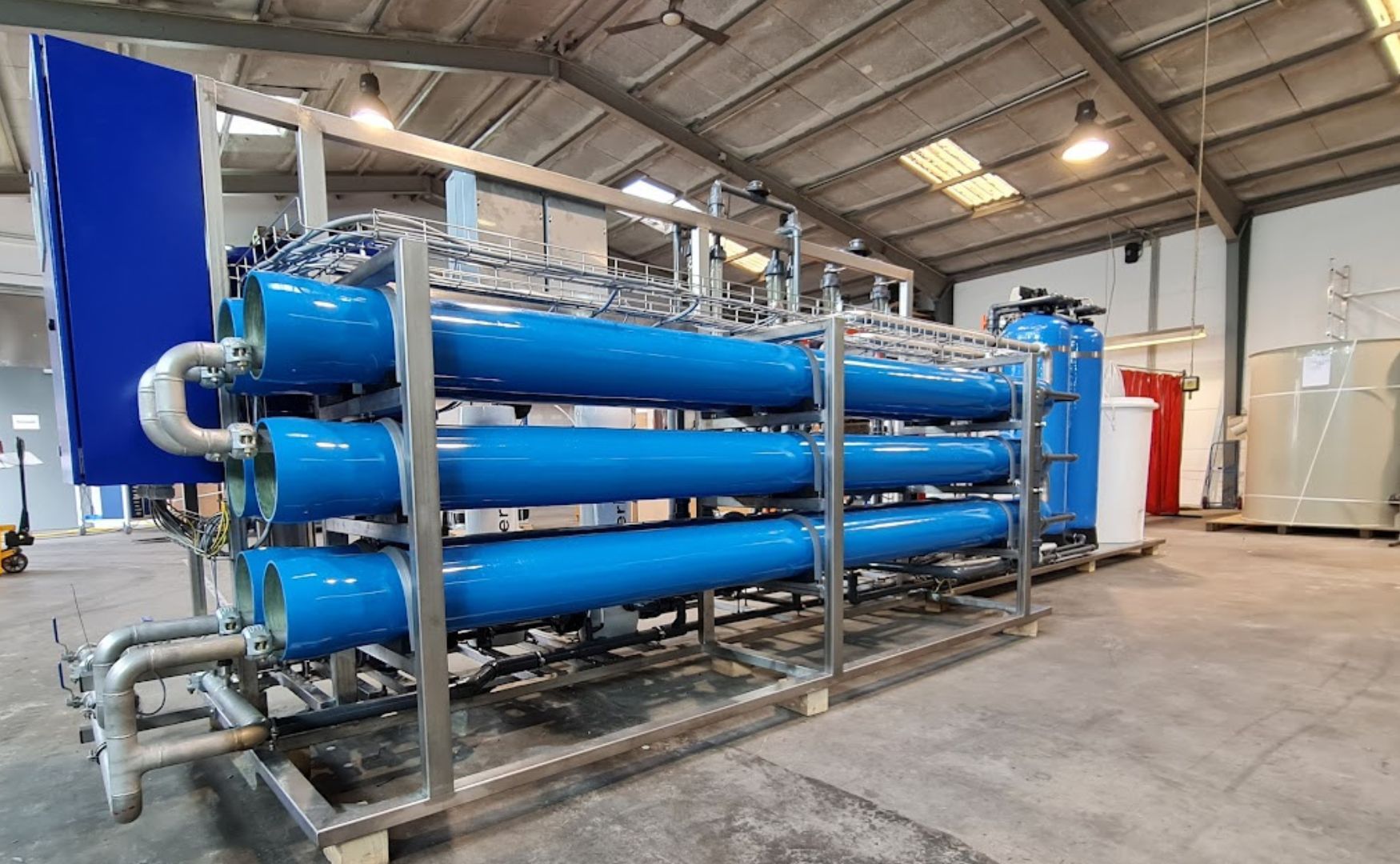Deferrization refers to the process of removing dissolved iron and manganese from water. These substances often occur in natural groundwater and can cause problems such as discoloration, deposits or changes in taste at high concentrations. Especially in industrial water treatment and drinking water production, de-icing is a key step in ensuring water quality and protecting equipment.
Table of contents
Technical basics
De-icing is based on chemical oxidation and subsequent filtration. The process comprises the following steps:
Oxidation of the iron
- Chemical reaction: Dissolved bivalent iron is oxidized to insoluble trivalent iron.
- Oxidizing agents: frequently used agents are atmospheric oxygen, chlorine, potassium permanganate or ozone.
Precipitation and filtration
- The resulting iron hydroxide is insoluble and forms flakes, which are removed by mechanical filtration, usually in sand or multi-layer filters.
Manganese removal (if necessary)
- If manganese is present at the same time, bivalent manganese is also oxidized to tetravalent manganese.

Photo: ALMA FIL multi-layer filter for removing oxidized iron
Areas of application
Drinking water treatment
- In der öffentlichen Wasserversorgung ist die Enteisung ein essenzieller Schritt, um die gesetzlichen Grenzwerte für Eisen (<0,2 mg/L) und Mangan (<0,05 mg/L) zu erfüllen.
Industrial water treatment
- Prevents corrosion and discoloration in cooling circuits, boiler systems and process water systems.
- Protection of downstream membrane systems such as reverse osmosis from fouling caused by iron and manganese deposits.
Food and beverage industry
- Ensuring high water quality to avoid flavor changes in products.
Process engineering
Ventilation systems
- The raw water is enriched with air or oxygen to initiate the oxidation of the iron. Aeration towers or diffusers are often used.
Oxidation reactors
- This is where the controlled oxidation and floc formation takes place. The process can be accelerated by adding oxidizing agents such as chlorine or potassium permanganate.
Filtration stages
- The flakes are usually removed by sand filters, multi-layer filters or membrane filterswhich ensure high filtration efficiency.

Advantages of de-icing
- Improved water quality: removal of iron and manganese reduces discoloration and odor problems.
- Corrosion protection: Protection of systems and pipelines against ferrous corrosion.
- Improved efficiency of downstream processes: Prevention of deposits and fouling in membrane systems and heat exchangers.
Challenges
- Regular maintenance: Filter systems must be flushed and maintained regularly to ensure consistent filtration performance.
- Oxidation time: The oxidation reaction time varies depending on the water composition and oxidizing agent.
- Chemical consumption: The use of oxidizing agents requires precise dosing and control.
ALMAWATECH solutions
ALMAWATECH offers customized solutions for de-icing that are tailored to the specific requirements of various industries. Our filtration systems and oxidation systems ensure effective removal of iron and manganese. We also offer pilot tests and water analyses to determine the optimum process combination for each application.
Conclusion
De-icing is an essential process in water treatment that helps to ensure high water quality and protect systems. With state-of-the-art technology and in-depth expertise, ALMAWATECH offers economical and efficient solutions for a wide range of applications.
For further information on our products, please feel free to contact us at any time!







